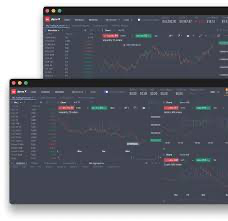
How Did DeFi Tokens Start?
A handful of tokens tend to dominate the conversation when it comes to decentralized finance. Compound’s COMP, for example, has been at the center of talks about yield farming and liquidity mining. Meanwhile, Yearn Finance’s YFI token has drawn speculation around its price after the protocol launched with no pre-mine.
What do these tokens have in common? Not much beyond the fact that they’re both used to govern DeFi apps. MIR is on an entirely different network than COMP and YFI.
The diversity of these tokens represents the larger DeFi landscape: There are many platforms and products out there with very different purposes. Instead of having one native token or coin for all DeFis projects, hundreds of tokens and coins are at play across Ethereum, Cosmos, and Polkadot.
The Rise of DeFi-Tokens
DeFi-tokens arose from a desire to create a decentralized exchange that could operate on the Ethereum network. The first DeFi-token, Maker (MKR), was launched in 2017. The decentralized exchange, MakerDAO, was used as collateral for stablecoin DAI. MKR tokens were used for locking and unlocking DAI.
The critical feature of decentralized finance is its ability to deliver financial services without centralized services or intermediaries. It uses smart contracts to manage those services in a trustless environment (without human intervention). The apps are transparent and accessible to anyone.
The main difference between DeFiS and traditional financial services is that they do not depend on third-party operators. This approach eliminates the need to pay commission fees to banks, lenders, or brokers.
Since its introduction, the world of decentralized finance (DeFi) has seen significant growth across the cryptocurrency industry. Although it has only been around for a couple of years, DeFi’s total value locked within its protocols has skyrocketed from under $630 million at the beginning of 2020 to nearly $241 billion today, an enormous increase in less than 12 months.
How Does DeFi’s Token Work?
We all know that DeFi is a growing ecosystem of financial applications built on top of smart contract blockchains like Ethereum.
It combines the programmability of smart contracts with decentralized protocols to bring new, open financial primitives to the world. However, you cannot run a DeFi-application without its respective token. But what is the significance of these DeFi-tokens?
Well, they allow their holders to vote on protocol updates and changes. In addition, the community supports the idea of DeFiS since it is democratic and no longer dependent on a single entity or organization.
This creates consensus reducing the chances of corruption or in-fighting as everyone has a say in the future direction of the token. Ultimately, DeFi-tokens can be seen as more stable than other crypto tokens because they are backed by those who use them.
Holders of DeFi-tokens enjoy voting rights on major decisions, including protocol changes, upgrades, integration of new features, etc. Holders have a vested interest in ensuring that the future of the DeFi-token is secure since failure results in losses.
DeFi is a revolution in the field of finance
In the same way that the internet revolutionized information and communication, DeFiS promises to revolutionize finance by bringing it to the world’s unbanked population and allowing them to participate in the global economy in a way that was never possible before.
DeFi-applications allow anyone with an internet connection to access financial services like lending and borrowing, high-yield savings accounts, insurance, trading and speculation, payments, stablecoins, and more, all without permission or censorship from any central authority.
By harnessing open source code and decentralized networks, DEFIS creators are building a financial system that has never been seen before. For example, you can use open-source software like the Ethereum platform to issue bonds, essentially IOUs backed by a pool of assets like real estate, gold, or cryptocurrencies.
You can also use open-source software to create an offer of securities (also known as a tokenized security), an investment vehicle that gives holders ownership stakes in a company, much like shares do.
Popular DeFi-applications
As indicated earlier, decentralized finance can be broadly divided into decentralized exchanges and different types of lending protocols such as MakerDAO.
Though most known for its stablecoin (the DAI), MakerDAO offers many other services, including multi-collateral loans. The main downside is that it only works with Ethereum, so users must convert their cryptocurrency into ETH before using the platform.
The compound is another lending protocol that operates similarly to MakerDAO though it’s not tied to Ethereum like its counterpart. Other popular lending platforms include Fulcrum, Aave, and Dharma.
Uniswap describes itself as “an automated token exchange” built on Ethereum. It aims to make swapping tokens more accessible by removing the need for order books and facilitating direct trades between users instead. Though Uniswap shares similarities with other decentralized exchanges like Kyber Network, 0x Protocol, and Bancor Network, it’s unique.
Another DeFis application is chainlink. It is a decentralized oracle service that aims to connect smart contracts with data from the real world.
Since blockchains cannot access data outside their network, oracles must function as data feeds in smart contracts. Oracles provide external data such as, temperature, weather) and real-world events (example, sports scores, flight delays) to smart contracts on the blockchain.
However, this centralized model of oracles is prone to a single point of failure and malicious attacks by bad actors that may tamper with the provided information.
To overcome this problem, ChainLink combines multiple sources of off-chain information into one on-chain contract, making it more reliable and tamper-proof and reducing the risk of manipulation.
There are many DeFi-token models and a few more in development. We are at the beginning of a new era of finance where all kinds of assets will be represented on blockchains.
Tokens will drastically reduce barriers to entry for financial institutions to sell tokens that represent claims to assets, even if they do not currently control them.
This will enable sustainable tokenization and transfer ownership of existing assets and securities and assets yet to be created in a new decentralized world.







